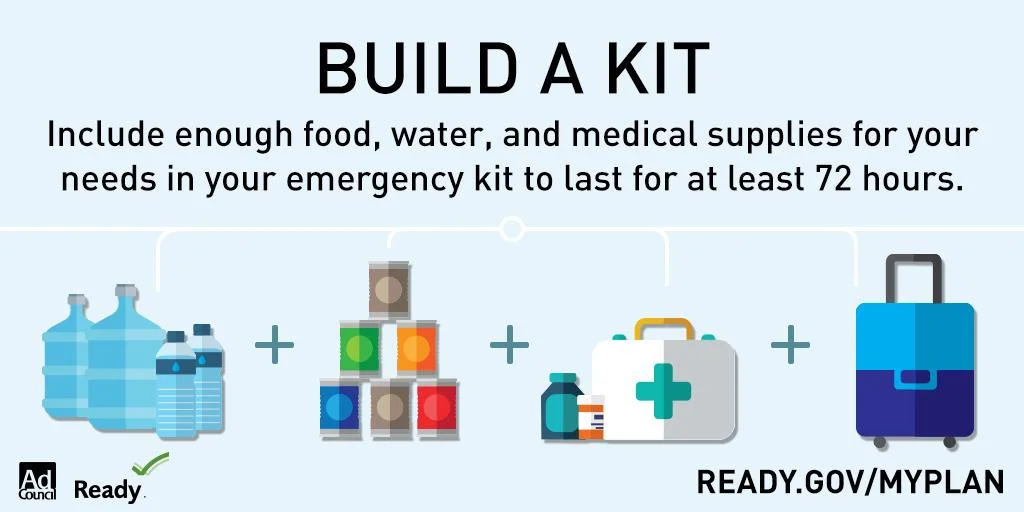Have a Plan - Make A Kit - Help A Neighbor
Our community has a strong history of responding to disasters. Now is the time to prepare to help your family and neighbors.
Simple steps can make a big difference in ensuring the safety and well-being of loved ones.
To learn more: The website www.Ready.gov breaks down the process for preparing for any emergency into three easy steps:
Make a plan. Decide how your family members should contact each other if you’re apart when the disaster occurs, where you will go if you need to leave home, and where you will gather inside the home (e.g., a safe room or basement). Establish an out-of-town contact. It’s also a good idea to have a list of important phone numbers (family, schools, care providers, doctors, insurance agents, employers, etc.). Practice your plan.
Get a kit. Have enough food, water and essential supplies to last three days. Include medicine, copies of prescriptions, flashlights, extra batteries, blankets, first aid supplies, personal hygiene items, appropriate seasonal clothing, cash, a battery operated or crank radio, a weather radio, cell phones and chargers, important documents, and other supplies your family may need.
Stay informed. Learn about disasters that could occur where you live (tornadoes, earthquakes, fires, etc.) and how to prepare for them. Preparedness should account for all types of disasters – both natural and man-made.
If you are a senior, or caring for a senior, it is especially important that you are prepared and that you have a plan in place to address medical needs and mobility issues. Learn more from our friends at Ready.gov.
If you are an individual with a disability, or caring for an individual with disabilities, it is important to have a plan that accommodates their individual needs. Learn more about how you can do that.
Please contact us if you wish to teach or volunteer at one of our first aid or emergency preparedness classes.
Image Credit: FEMA

